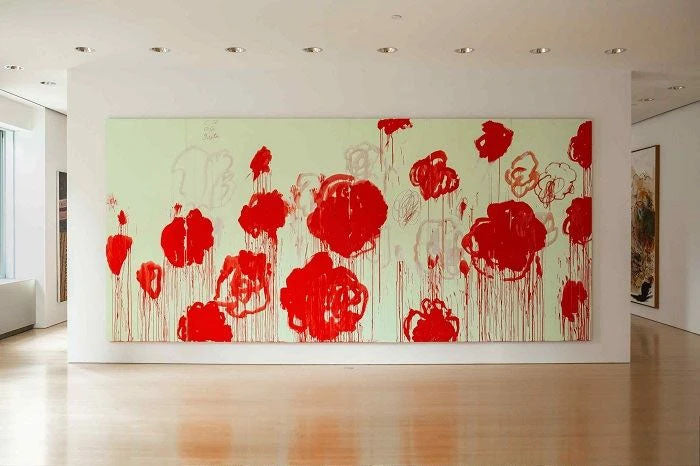Sotheby’s employed strong marketing tools to promote and celebrate its mandate in auctioning the coveted Macklowe collection. Hopefully, art will continue to remain the focus.

Alberto Giacometti, Le Nez. Estimate on request. Conceived in 1947; this version conceived in 1949 and cast circa 1964. Courtesy Sotheby’s
Oh, happy days. This fall is turning out to be a jewel of an auction season and Sotheby’s is leading the charge, not just because it is but also because it’s selling itself well. There is no question that the new Sotheby’s under the ownership of Patrick Drahi and the management of Charles Stewart, which coincided with the onset of the pandemic when subtracting a grace period of about half a year, is reinvigorated: there is a freshness to it, apparent in its smooth implementation of technological tools, a hunger with which it undertakes new ventures, underpinned by a powerful business-mindedness, and a flexibility in the way it steers its ship, which especially manifested itself during the first corona months. It’s likely a combination of all these elements that secured it the oh-so-coveted Macklowe Collection, the mandate of which it unveiled with great fanfare last week.
To heighten the suspense, the auction house sent out a release on Wednesday in which it promised a historic announcement that would be live streamed on Thursday morning. While the importance and grandeur of this collection and the mastery of the artworks it consists of — perhaps best articulated in the announcement video by Lisa Dennison, chairman of Sotheby’s in the Americas, who spoke of “the exceptional caliber of this collection in which every artist is represented at their very highest level of achievement” — can’t be overstated, the history-making aspect of its sale can be questioned. There’s nothing specifically historic about auctioning off a collection, and even with a $600 million price tag it’s not the most expensive collection to come under the hammer. The Collection of Peggy and David Rockefeller, which sold at Christie’s in 2018, amounted to almost $850 million. This didn’t prevent Sotheby’s from touting it as a record estimate for a collection, because the Rockefeller had a lower one. Ultimately, the sale represents a thrilling moment in which an exceptional collection will be broken up and some of the greatest artwork of the twentieth and twenty-first centuries will change hands, but this will not change the market or the way we view it. But, as we have established in previous reports, there is a shift towards mass media — and the aggressive marketing style that comes with it — in the art market, and Sotheby’s is not afraid of some clickbait.

Gerhard Richter, Seestück, 1975. Estimate $25–35 million. Courtesy Sotheby’s
The auction house implemented classic marketing tools for it, and the feeling is that this was another precedent that will be copied and developed countless times over the next years, not just on “historic” occasions. As part of that, we’ll get to enjoy appealing teasers, trailers, live-stream announcements and so on, in which masterpieces will be exhibited in a visually and audibly pleasing digital environment, only to be surpassed by actual in-person viewings; the works will be presented effectively, their provenance, significance and context laid out clearly; we’ll get to know better the faces behind those countless departments, as was the case in the Macklowe video — although they still have some training ahead of them to become the deft presenters the entertainment industry is used to. On the flipside, however, the aggressive promotion of the announcement serves as a premonition of what will happen to art-market-following inboxes once this becomes mainstream.

Mark Rothko, No. 7, 1951. Estimate on request. Courtesy Sotheby’s
When all is said and done, we can only hope that despite all this marketing business, the focus will remain on what’s important, which is the art. Alberto Giacometti’s Le Nez, 1964, carries a $60 – $80 million estimate because of its creative significance and perceptible frailty, because of its powerful and energetic convergence of elements that produce a singular work of expressive art, and not vice versa. With the same estimate, Mark Rothko’s stunning No. 7, 1951, is breathtaking and moving, transporting a viewer to a different emotional plain, the means by which it does so defying simple rational explanation, despite attempts to do so. Also Gerhard Richter’s Seestück, 1975, (est. $25 million – $35 million) captures an emotional state which inexplicably awakens a personal similitude of subjective relatedness in any viewer who catches a glimpse of it, and CY Twombly’s Untitled, 2007 ($40 million – $60 million), in monumental size viscerally summarizes a lifetime of searching and of artistic development.

Cy Twombly, Untitled, 2007. Estimate: $40–60 million. Courtesy Sotheby’s
The entertainment and marketing industry have a tendency of gradually voiding the vessel of its meaningful content in order to simplify the physical object for sales purposes. Complexity is not optimal in those spheres as it can’t be captured in a snapshot and does not produce instant satisfaction. But that is not what good art is, and while implementing advanced tools can serve great purposes, such as making art accessible and educating a wider audience about it in an engaging way, market leaders like auction houses and galleries should be aware of their responsibility in continuing to presenting the history behind such important works — especially in a time where NFTs continue to sell for eight figures (see 101 Bored Ape Yacht Club, 2021, which sold for $24.4 million last week) — and in cases where the interests of art and marketing won’t coincide, and such cases will arise, to stand with the former. Thankfully, we’re not there yet, and for now we can look forward to November (and to the second part of the sale in May 2022) to enjoy great auctions.

